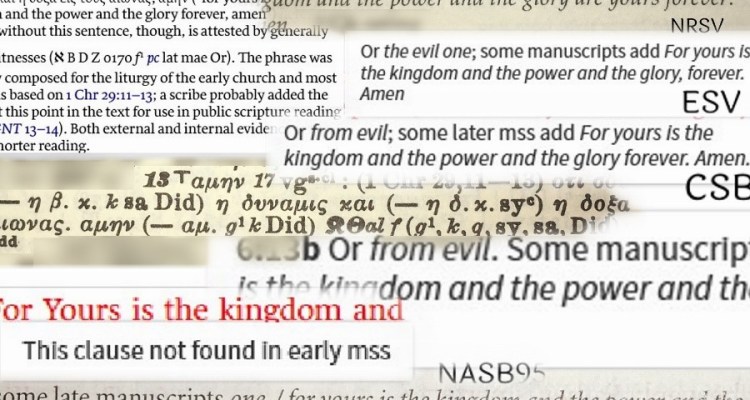Last week I wrote about the estimated 200,000-500,000 textual variants in the Greek New Testament manuscripts. That's a lot of variants, but with over 2,000,000 pages of New Testament manuscripts available for scholars to study, that averages out to less than 1 unique textual variant for every 4 pages of text. Now consider, the majority of textual variants in the New Testament manuscripts are spelling differences that don't affect the meaning of the...
How Many Textual Variants Exist in the New Testament Manuscripts?
In my article What are Textual Variants? I described textual variants as being any word or phrase in a manuscript that is different from the standard text. If a word is misspelled, it's a variant. If a scribe accidentally left out a verse, it's a variant. Any change, no matter how small, is considered a variant. I've read about two ways to count textual variants, and they conflict.
Counting Method 1
The first method for counting...
What are Textual Variants?
Last week I started a new series with the article Why are there Variations in Different Translations of the New Testament?. Textual Variants are places where ancient manuscripts attest to more than one reading of a passage. There are about 138,000 words in the Greek New Testament, and it's unreasonable to think anyone could copy it without making a single mistake. Most of the variants are simple spelling errors or other accidental...
Why are there Variations in Different Translations of the New Testament?

Have you ever looked at the footnotes in a Bible and seen an alternate wording? Perhaps a note that starts with "some manuscripts add....", "Other ancient authorities add" or even "This clause not found in early mss"? For example, the last verse of the Lord's Prayer can be written several ways:
- And lead us not into temptation, but deliver us from evil. (Matthew 6:13 ESV)
- And lead us not into temptation, but deliver us from the evil...
Why did I Study Biblical Manuscripts?
People study Biblical manuscripts for a variety of reasons.
- Some manuscripts have detailed drawings in them, and it's amazing how many years it took to create some of the manuscripts (What are Illuminated Manuscripts?).
- The study of paleography (What is Paleography?) shows how writing styles changed over time.
- Manuscripts are evidence of how people have valued God's written...
What is Skellig?
The monastery on the island of Skellig Michael, off the coast of Ireland, was built about A.D. 600-800, and was in use until about A.D. 1200-1300. The name comes from the Irish word Sceillic, which means "steep rock," because the island rises out of the ocean 715 feet. There are 600-670 steps from the ocean to the monastery (depending on which part of the monastery), up which water and food had to be carried when the monastery was in use. In 1996,...
What are Illuminated Manuscripts?
Illuminated manuscripts are manuscripts with pictures that, originally, were intended to make the text more understandable. In places where literacy was low, illuminated manuscripts could help non-readers understand the Bible (or other texts) more easily. In later times, illumination came to mean decorated, regardless of whether the decorations were related to the text.
Lindisfarne Gospels
<!--...
Do Fake or Forged Biblical Manuscripts Exist?
I want to address several related issues in this article:
- Are Authentic Manuscripts Legally Available for Sale?
- Are Biblical Manuscripts Sold Illegally?
- What Are Unprovenanced Biblical Manuscripts?
- Do Fake or Forged Biblical Manuscripts Exist?
Are Authentic Manuscripts Legally Available for Sale?
I did a quick search on Google and found several web sites that sell old Biblical manuscripts and...
What is “First Century Mark”?
There's a lot of conflicting information on this subject, so please forgive me if I get some details wrong.
The Players
This whole story is convoluted, so a "cast of characters" (and organizations) may help, and I'll be using some below.
- Egypt Exploration Society (ESS) - The organization that owns and curates the Oxyrhynchus Papyri, found in Oxyrhynchus, Egypt, in the late 1800's to early 1900's. Based in...
What is Boustrophedon?
In my article Do I Need a Dictionary to Study Ancient Manuscripts?, I included the word boustrophedon, but I haven't used the word yet in any of the articles. I've read there are (or were) New Testament manuscripts which use (or used) boustrophedon, but I was unable to find any specific manuscripts.
Most languages that I'm aware of write from left-to-right, while some languages are written right-to-left (e.g. Hebrew and Arabic)....
